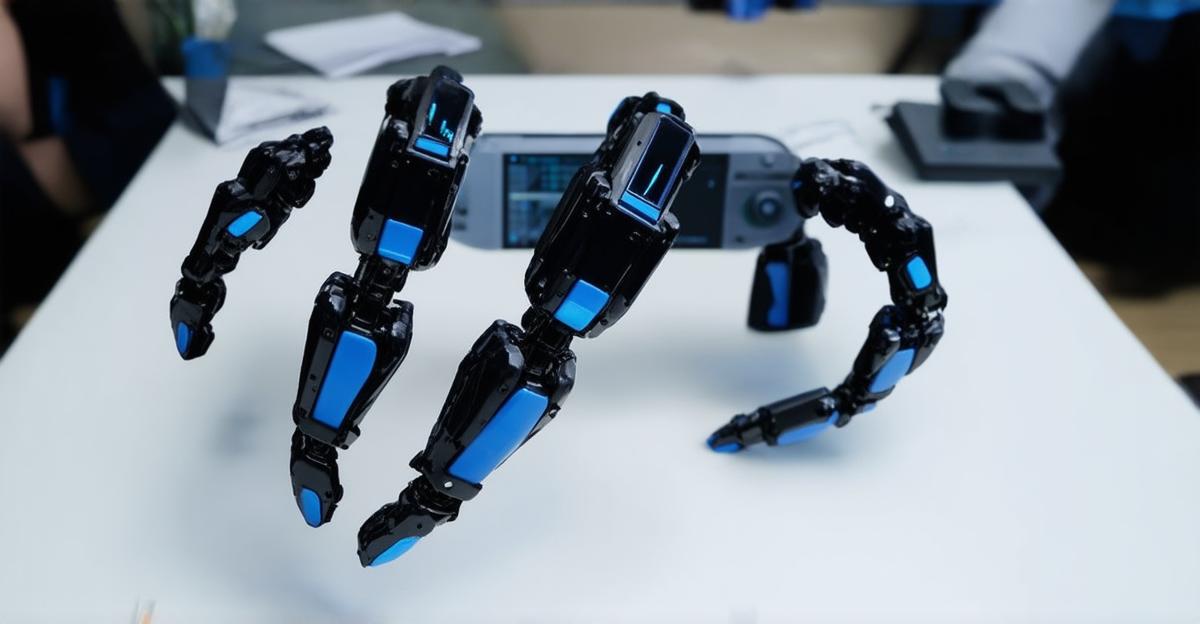In a fascinating leap forward for neuroscience and human-machine interaction, researchers have uncovered compelling evidence that training with brain-actuated supernumerary robotic fingers (SRF) can significantly boost our ability to learn and generalize motor skills. This study, published in npj Science of Learning, not only demonstrates the potential for enhancing human motor capabilities but also sheds light on the intricate neural mechanisms underlying this improvement.
This study investigates the generalization of motor sequence learning ability and corresponding neuroplasticity mechanisms following brain-actuated supernumerary robotic finger (BCI-SRF) training. The research hypothesized that BCI-SRF training enhances motor sequence learning generalization by promoting functional reorganization of the sensorimotor network.
What is Brain-Actuated Supernumerary Robot Training?
Brain-actuated supernumerary robot training, specifically BCI-SRF in this study, represents an advanced human-machine interaction paradigm. This novel approach integrates brain-computer interface (BCI) technology with a supernumerary robotic finger (SRF), allowing participants to control an additional, artificial digit through neural signals. The training protocol involves:
- Neural signal acquisition: EEG or other neuroimaging techniques capture brain activity.
- Signal processing: Algorithms interpret neural patterns associated with intended movements.
- Robotic actuation: The SRF responds to processed neural signals, executing movements.
- Feedback loop: Visual and proprioceptive feedback facilitates motor learning and neural adaptation.
This innovative training method aims to exploit neuroplasticity, potentially enhancing motor control and learning beyond the capabilities of natural human anatomy.
Methodology
- Participants: 20 healthy right-handed individuals
- Intervention: 4-week training (BCI-SRF group vs. inborn finger group)
- Assessment: Novel SRF-Finger opposition sequences at pre-, post-training, and follow-up
- Imaging: Task-based and resting-state fMRI, focusing on the sensorimotor network
Key Findings
- Behavioral Performance:
- BCI-SRF group showed 350% improvement in novel sequence learning ability compared to the finger training group.
- Significant increase in control sequence accuracy rate for BCI-SRF group (p < 0.05).
- Functional Connectivity (FC) Changes:
- Significant increase in FC between left primary sensorimotor cortex (S1M1_L) and left middle frontal gyrus.
- Enhanced intrahemispheric FC in the right hemisphere and interhemispheric FC for BCI-SRF group.
- Significant correlation between FC changes and improvements in control sequence accuracy.
- Granger Causality Analysis (GCA):
- Increased bi-directional causal effect between sensorimotor cortex and thalamus/frontal lobe.
- Enhanced information flow along the sensorimotor cortex-cerebellar-thalamus circuit.
- Strengthened frontal-parietal circuit interaction.
BCI-SRF training significantly modulates global integration of sensorimotor networks and specialization of local circuits, accompanied by improved motor sequence learning ability. This brain-machine-body training approach demonstrates potential for motor augmentation and clinical rehabilitation.
Implications
The study suggests that novel human-machine interaction paradigms, such as BCI-SRF, can enhance motor learning generalization through functional reorganization of neural networks. This research opens avenues for developing advanced neurorehabilitation strategies and motor skill enhancement techniques. The integration of supernumerary robotic devices with neural control mechanisms may lead to unprecedented advancements in human motor capabilities and therapeutic interventions for motor disorders.
The Bottom Line
This study isn’t just about cool robotic fingers – it’s a glimpse into the incredible plasticity of the human brain and our potential to push the boundaries of motor learning. As we continue to explore the frontiers of brain-computer interfaces and robotic augmentation, we may be on the cusp of unlocking new levels of human performance and recovery.
So, the next time you’re fumbling with a new skill, just remember – your brain might one day have a robotic helper to boost its learning power!
References
- Wolpaw, J. R., & Wolpaw, E. W. (Eds.). (2012). Brain-computer interfaces: principles and practice. Oxford University Press.
- Di Pino, G., Maravita, A., Zollo, L., Guglielmelli, E., & Di Lazzaro, V. (2014). Augmentation-related brain plasticity. Frontiers in Systems Neuroscience, 8, 109. https://doi.org/10.3389/fnsys.2014.00109
- Desmurget, M., & Sirigu, A. (2015). Revealing humans’ sensorimotor functions with electrical cortical stimulation. Philosophical Transactions of the Royal Society B: Biological Sciences, 370(1677), 20140207. https://doi.org/10.1098/rstb.2014.0207
- Clancy, K. B., Koralek, A. C., Costa, R. M., Feldman, D. E., & Carmena, J. M. (2014). Volitional modulation of optically recorded calcium signals during neuroprosthetic learning. Nature Neuroscience, 17(6), 807-809. https://doi.org/10.1038/nn.3712









